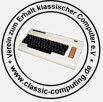Greetings,
Last Friday another Spanish unit appeared. With both overCLK 's and mine's this is the third known unit to appear. This one is like mine and different from overCLK 's. As both units were found in Catalonia while overCLK 's was found in another autonomous comunity the conclusion is that the units sold in the Catalan market were different from the ones of the rest of Spain (which have that stylish Triumph-Adler badge).
Der Inhalt kann nicht angezeigt werden, da du keine Berechtigung hast, diesen Inhalt zu sehen.
As seen, the case is the standard one for the P2, but with the distributor badge (Guillamet) under the Alphatronic Sticker. My unit doesn't has the badge, apparently it was lost long ago but the glue is still there as a reminder of what once held.
On the technical side, the computer is also a little different. Up to that point all known P2 units were 64K units (even mine, which is not a "U" model). This one is the unupgraded 48K unit.
Der Inhalt kann nicht angezeigt werden, da du keine Berechtigung hast, diesen Inhalt zu sehen.
Now, the tests... the power supply is defective. It was shorting 5v, 12v and ground. All the boards were fine, there was no dead capacitor, even in the 48K DRAM card. With the boards in good shape I considered the computer to be ready for a test so I explained his owner how to wire an ATX into the backplane. After he checked the supply voltages from the backplane we considered it to be secure for the power up so he connected the three boards required for minimal operation: CPU, Keyboard and Video. The system resets correctly when powered on (also beeps as it should) and reacts to commands from keyboard. But the video display seems to be faulty.
Der Inhalt kann nicht angezeigt werden, da du keine Berechtigung hast, diesen Inhalt zu sehen.
Der Inhalt kann nicht angezeigt werden, da du keine Berechtigung hast, diesen Inhalt zu sehen.
Der Inhalt kann nicht angezeigt werden, da du keine Berechtigung hast, diesen Inhalt zu sehen.
The monitor is known to be working fine, so the fault is up to the video interface. I think his problem is CSync but I would like to know what do you think the problem would be. VTAC? 
Note: this unit is not mine and I haven't even seen it other than i pictures and a couple of videos, the images posted here were uploaded with the consent of his owner. I'll try to convince him to come here. When he rescued it he said there was some possibility he had the Spanish manuals but after a search he found none. Still, the simple fact to appear was enough to give me one of the best days of the year.
Regards,
Jaume


